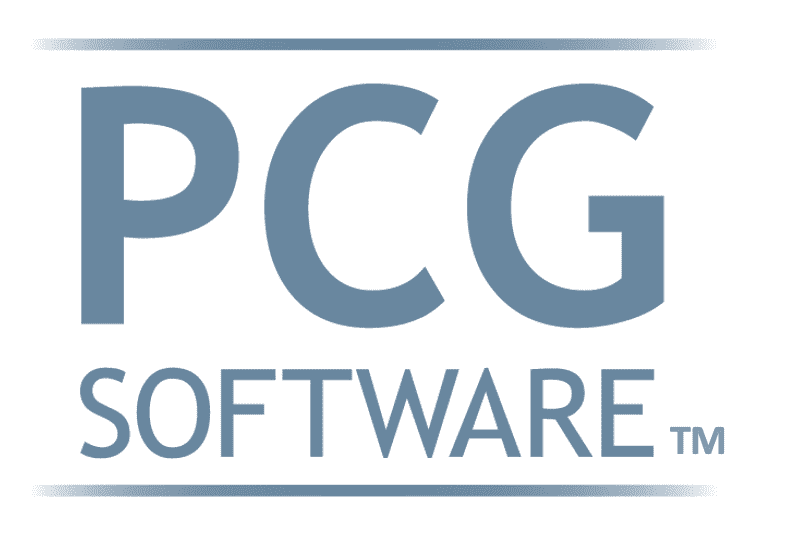Healthcare Hiring Trends for 2025
The healthcare industry is entering a new era of intensifying hiring challenges, and payer organizations must prepare to adapt. As competition for top talent heats up, staying ahead of hiring trends is crucial to building a resilient workforce. Success in 2025 will depend on how well organizations attract, hire, and retain employees by adjusting to new demands and workplace dynamics. Whether crafting compelling job descriptions or creating a workplace culture that inspires employees to grow, adopting proactive hiring strategies can position your organization for success.
This article dives into the top strategies for healthcare organizations to attract qualified candidates, reduce turnover, and build high-performing teams. From critical hiring practices to leveraging online platforms and refining recruitment efforts, we’ll provide actionable insights to help payer organizations thrive. Get ready to explore practical ways to hire talent, strengthen employee retention, and stay ahead of competitors in the fast-evolving healthcare landscape.
Here are the sections of the Article:
- Get Your Payer Organization’s Culture Locked Down
- Crafting Effective Job Openings and Descriptions.
- Hiring Tips for Key Departments
- Top Online Hiring Platforms and Hiring Agencies
- Hiring, Firing, Incentivizing, and Retaining Different Age Groups
- Why Marketing is vital for growth and employee retention
Get Your Payer Organization’s Culture Locked Down
Building a Strong Organizational Foundation
Creating a strong and effective healthcare organization starts with establishing a clear hierarchy, planning for succession, offering competitive salaries, providing comprehensive health and dental coverage, and promoting a supportive company culture. These foundational elements set the stage for a resilient workforce that is motivated, aligned with organizational goals, and equipped for both current and future challenges.
Clear Hierarchy and Succession Planning
A well-defined company hierarchy is crucial for maintaining order and ensuring smooth operations. It clarifies roles, responsibilities, and reporting lines, thereby reducing confusion and improving decision-making processes. When employees know exactly where they stand within the organizational structure and whom to report to, accountability improves, and performance is optimized.
Succession planning is also a key aspect of building a sustainable health plan organization. Identifying high-potential employees who can take on leadership roles in the future ensures continuity and reduces disruptions caused by sudden changes in staffing. A proactive approach to succession planning helps prepare staff for leadership roles by offering targeted training and development, which in turn, boosts morale and creates a culture of opportunity and growth.
Offering Competitive Local Salaries and Benefits
To attract and retain top talent, offering competitive salaries that align with local industry standards is essential. Regularly reviewing and benchmarking your compensation packages against competitors helps ensure your offerings remain attractive to job seekers. Salary is one of the most important motivators for candidates, especially in the healthcare sector, where talent is in high demand. Providing competitive local salaries helps recruit talent and retains high-performing employees who more lucrative offers might otherwise lure away.
- Comprehensive health and dental coverage is another critical benefit. Given the nature of the healthcare industry, employees prioritize comprehensive insurance benefits for themselves and their families. Offering competitive health, dental, and even vision insurance packages demonstrates the organization’s commitment to its workforce, making your company an employer of choice.
Mentorship Programs and Company Culture
Mentorship programs play a significant role in helping new hires integrate, develop professionally, and achieve long-term success within the organization. Pairing experienced employees with recruits helps foster a supportive atmosphere where employees can learn, grow, and feel confident in their roles. Mentorship also benefits mentors, who gain leadership experience and a sense of fulfillment from guiding others.
Creating a positive company culture is crucial for overall employee satisfaction and retention. Company culture encompasses shared values, goals, and practices that define the work environment. Promoting a culture of collaboration, continuous learning, and innovation makes employees feel valued and more likely to remain with the organization. A strong company culture also reduces turnover rates, improves team cohesion, and drives productivity.
Important aspects of company culture include:
- Work-Life Balance: Providing ample paid time off, flexible schedules, and mental health support to ensure employees can maintain a healthy work-life balance.
- Career Development: Offering continuous training programs, opportunities for lateral movement, and clear pathways to career advancement help employees see long-term opportunities within the organization.
- Recognition and Rewards: Regularly acknowledging and rewarding employees for their contributions fosters a culture of appreciation and motivation. Whether through formal awards or informal recognition, celebrating employee achievements boosts morale and engagement.
- By laying a solid foundation with a clear hierarchy, comprehensive succession planning, competitive compensation, and a strong company culture, health plans can create an environment that attracts high-quality candidates, retains skilled employees, and fosters ongoing professional growth.
Crafting Effective Job Openings and Descriptions
Clear and comprehensive job descriptions are crucial to attracting top talent and setting expectations. Thoughtfully designed job postings reduce misunderstandings and help bring in the right candidates. Highlighting the role’s key responsibilities and expectations ensures that candidates understand what they’ll be responsible for, setting realistic expectations from the outset. Including any critical compliance knowledge, especially for payer organizations, helps attract candidates prepared to handle the complexities of the role.
Specifying the skills and experience needed helps filter the most qualified candidates. Listing skills such as experience in claims processing, data analytics, or compliance monitoring attract applicants whose qualifications match the role, saving time during the screening process. Promoting job openings internally encourages loyalty and provides growth opportunities for existing employees. Internal recruitment shows that the organization values its workforce and is committed to its growth, and using internal platforms such as employee portals or newsletters ensures all staff are aware of opportunities to advance.
Hiring Tips for Key Departments
- Claims Department: Hiring for the claims department requires a focus on accuracy, attention to detail, and familiarity with healthcare regulations. Look for candidates with prior experience in medical billing or claims processing and those proficient in using claims management software. Consider including compliance and regulatory knowledge skills, which are crucial for minimizing errors. Certifications such as Certified Professional Coder (CPC) or Certified Professional Biller (CPB) are beneficial for ensuring a candidate's understanding of claims processes. Additionally, soft skills such as problem-solving and communication are emphasized to effectively handle inquiries from patients or providers.
- Medical Management: The medical management department needs employees who are skilled in clinical decision-making and have an understanding of care coordination. Prior experience in case management or utilization review is often required. Registered Nurses (RNs) or professionals with certifications such as Certified Case Manager (CCM) are typically well-suited for roles in this department. Highlight the need for candidates who can collaborate with clinical teams, administrative staff, and those with experience with Electronic Health Records (EHR) systems. Strong interpersonal skills are essential to facilitate communication between healthcare providers, patients, and insurance teams.
- Provider Relations: Hiring for provider relations requires individuals with strong interpersonal and negotiation skills. Candidates should have a healthcare administration, network development, or relationship management background. Look for experience in handling provider contracts, credentialing, and conflict resolution. Emphasize the importance of communication skills, as employees in this department need to maintain positive relationships with healthcare providers while navigating any issues that may arise. Knowledge of healthcare reimbursement models and experience working with Managed Care Organizations (MCOs) are also valuable attributes. Providing training in conflict resolution and cultural competence can help maintain effective relationships across diverse provider networks.
Top Online Hiring Platforms and Hiring Agencies To ensure that your health plan organization has access to a wide range of qualified candidates, it is important to leverage the best online hiring platforms and reputable hiring agencies that can support your recruitment efforts.
- Top Online Hiring Platforms:
- LinkedIn: LinkedIn remains the top platform for professional networking and hiring, allowing health plans to reach professionals actively looking for opportunities and passive candidates who may be open to the right role.
- Indeed: Indeed offers a broad reach, with millions of job seekers using the platform to find their next career opportunity. It is beneficial for posting roles that require specific healthcare-related skills.
- Glassdoor: Glassdoor allows you to post jobs and helps showcase company culture through employee reviews, which can help attract the right talent.
- ZipRecruiter: ZipRecruiter’s technology matches job seekers with job listings based on their experience and skill sets, making it easier for healthcare payers to find candidates quickly.
- Monster: Monster offers access to a large talent pool and provides features like resume search and targeted email campaigns to streamline recruitment.
- Hiring Agencies:
- Robert Half: Robert Half specializes in recruiting skilled professionals, including those for the healthcare industry. Their wide reach and expertise in placing talent can assist health plans in finding candidates with specific qualifications, particularly for temporary or project-based roles.
- Randstad Healthcare: Randstad is one of the largest staffing firms in the world. Its specialized healthcare division helps payer organizations find the best clinical and non-clinical talent.
- Kforce: Kforce specializes in professional staffing and healthcare solutions. Their expertise includes sourcing for IT and operational roles, which are crucial for payer organizations' claims and medical management departments.
- AMN Healthcare: AMN provides various staffing solutions, including managed services and recruitment for healthcare settings. They have a deep understanding of healthcare staffing trends and can efficiently assist in filling complex roles.
- Adecco: Adecco’s healthcare staffing services provide temporary, temp-to-hire, and direct-hire options. They have extensive experience sourcing healthcare professionals, which makes them a good fit for large-scale staffing needs where internal HR teams might be limited.
Hiring, Firing, Incentivizing, and Retaining Different Age Groups
Managing a diverse healthcare workforce requires a tailored approach to effectively hiring, firing, incentivizing, and retaining employees across different age groups. Each generation has distinct motivations, strengths, and preferences. Here’s a guide on managing these processes for each key group in the healthcare industry.
Generation Z (Born 1997-2012)
Hiring: Gen Z is eager to learn, thrives in technology-integrated environments, and appreciates transparency. When hiring Gen Z, emphasize opportunities for growth and professional development, especially in areas involving new technologies like AI and digital tools. Use digital recruitment platforms, social media, and video interviews to engage them, as these channels align with their tech-forward expectations.
Firing: When letting go of Gen Z employees, be direct and transparent. They value authenticity, so it’s important to provide clear reasons for termination while offering constructive feedback. This group will appreciate resources for future career development and mentorship to support their next steps.
Incentivizing: To incentivize Gen Z, focus on learning opportunities, mentorship programs, and recognition for their contributions. Rewards like certifications, online courses, and public recognition can foster motivation.
Retaining: Retain Gen Z by offering a dynamic work environment that includes career advancement opportunities, frequent performance feedback, and mentorship. Flexible work arrangements—like remote or hybrid options—are also very attractive to this group, as are clear pathways for upward mobility.
Millennials (Born 1981-1996)
Hiring: Millennials often seek work that aligns with their values and makes a positive impact. When hiring Millennials, promote your company culture, mission, and how the role contributes to the community, such as improving patient outcomes. Highlight work-life balance, benefits like wellness programs, and opportunities for career growth.
Firing: Millennials appreciate transparency and empathy during the firing process. Provide a clear explanation, discuss areas of improvement, and ensure they feel respected throughout the process. Offer resources to help them transition to their next role, such as networking contacts or job placement services.
Incentivizing: Millennials value meaningful work and personal development. Incentives like career advancement opportunities, training programs, paid time off for volunteer work, and wellness initiatives are highly effective for this group.
Retaining: To retain Millennials, focus on professional growth opportunities and maintaining an open line of communication. Regular feedback, opportunities for lateral career moves, and recognition for innovative ideas are key retention strategies. Millennials also value flexibility in scheduling and parental leave options.
Generation X (Born 1965-1980)
Hiring: Generation X brings extensive experience and leadership skills. When hiring Gen X, emphasize job stability, competitive salaries, and benefits like health insurance and retirement plans. Flexibility is crucial, so offering remote work options can be an attractive draw.
Firing: When firing Gen X employees, be professional, straightforward, and respectful. They appreciate honesty and a direct approach, so provide a clear explanation and avoid ambiguity. Recognize their years of service and provide support through transition assistance, such as career coaching.
Incentivizing: Incentives for Gen X should focus on work-life balance, such as flexible hours, remote work options, and benefits that support their family needs. They also appreciate formal recognition programs that highlight their contributions and tenure.
Retaining: Retain Gen X by recognizing their expertise and providing opportunities for them to mentor younger colleagues. They value stability, so emphasize long-term career paths, and ensure that their experience is respected and utilized effectively. Acknowledge their hard work through recognition programs and maintain a balanced workload.
Baby Boomers (Born 1946-1964)
Hiring: Baby Boomers bring valuable experience and reliability. When hiring Boomers, highlight job security, the value of their expertise, and benefits like healthcare and retirement planning. Emphasize the stability and impact they can have in a role that values their extensive background.
Firing: Firing Baby Boomers requires sensitivity. Provide a clear and respectful explanation, acknowledge their contributions, and, if possible, offer a phased retirement plan or assistance with retirement planning. It’s important to value their years of service and offer supportive transition resources.
Incentivizing: Incentivize Baby Boomers by recognizing their contributions and providing benefits tailored to their stage in life, such as healthcare coverage and retirement support. Acknowledgment in the form of awards or public recognition can be particularly meaningful.
Retaining:
Retain Baby Boomers by ensuring they feel valued and offering flexible work arrangements, like part-time roles or reduced hours to ease the transition toward retirement. Encourage them to take on mentorship roles, allowing them to share their knowledge and expertise with younger generations.
Marketing and Outreach to Attract Talent
Strategic recruitment is essential for targeting talent pools effectively, especially in competitive markets. Health plans must go beyond traditional recruitment tactics to build a resilient workforce and invest in robust outreach strategies. Focusing recruitment efforts on local talent pools helps shorten the hiring cycle and improve retention. Local hires are more likely to be familiar with the community's healthcare needs, which improves the quality of care provided. Additionally, local recruitment reduces relocation costs and fosters community within the organization. Attending industry events, job fairs, and local college career days offers opportunities to network with qualified candidates and identify those who align with organizational needs and culture.
Offering competitive salaries and benefits is crucial for attracting top talent. Regularly monitoring wages offered by competing payer organizations and healthcare providers helps ensure competitive compensation packages. Health and dental insurance packages are also significant factors in attracting candidates. Comprehensive benefits packages that address employees' and their families' needs are key differentiators in the competitive healthcare job market.
Providing flexible spending accounts (FSA) is another benefit that demonstrates a commitment to supporting employee health and well-being. FSAs allow employees to manage out-of-pocket healthcare costs more efficiently, which is especially attractive in the healthcare industry. Additionally, promoting a healthy work-life balance through generous time-off policies helps prevent burnout. Ample paid time off, vacation, and mental health days are essential for reducing burnout—particularly prevalent in healthcare roles—and help retain talent by preventing overwork.
Without Marketing, your Competitors Will Gain Market Share
Health plans are at a significant disadvantage compared to larger organizations with established, effective marketing teams without a solid marketing department handling and advising on organic and paid campaigns, reputation management, and conferences. A dedicated marketing department is responsible for driving awareness and showcasing the unique strengths of the health plan to potential employees and partners. For instance, organic and paid campaigns on platforms like LinkedIn and Google help increase visibility among qualified job seekers. Reputation management, such as responding to reviews and highlighting positive feedback, is crucial for establishing trust in the marketplace. Additionally, participating in and sponsoring industry conferences creates networking opportunities and positions the health plan as an industry leader. Larger organizations often outperform smaller health plans in these areas because they have robust marketing strategies that drive consistent engagement with key audiences, including potential employees. Investing in a comprehensive marketing approach ensures your health plan remains competitive, attractive, and visible in an increasingly crowded healthcare market.
Conclusion for 2025 Health Plan Staffing
Healthcare staffing trends in 2025 demand proactive measures from health plans to stay competitive and efficient. Health plans can ensure optimal staffing and sustainable growth by focusing on pre-hiring preparations, crafting precise job descriptions, implementing strategic marketing efforts, and strengthening employee retention strategies. With these strategies in place, health plan executives will be well-prepared to navigate the evolving staffing landscape, reduce turnover, and build resilient, high-performing teams for the future. A holistic workforce management approach is critical for addressing labor challenges and thriving in a complex, competitive market.
References:
- https://www.bls.gov/opub/ted/2024/51-percent-of-private-industry-workers-participated-in-high-deductible-health-plans-in-2023.html
- https://intelliworxit.com/blog/healthcare-recruiting-retention/
- https://www.ibisworld.com/industry-statistics/employment/health-medical-insurance-united-states/
- https://www.iii.org/fact-statistic/facts-statistics-careers-and-employment
- https://www.zippia.com/the-health-plan-careers-117674/demographics/#reviews-popup-displayed
- https://www.census.gov/library/stories/2024/02/health-care-costs.html
- https://www.bls.gov/ooh/healthcare/
- https://www.staffingindustry.com/editorial/healthcare-staffing-report/despite-tough-market-healthcare-firms-shine-on-fastest-growing-list
- https://www.staffingindustry.com/editorial/healthcare-staffing-report/where-employment-is-rising-and-falling-in-healthcare
- https://www.staffingindustry.com/us-healthcare-staffing-market-assessment-2024-update
- https://www.branchapp.com/blog/healthcare-staffing-trends-to-follow
- https://staffinghub.com/guest-posts/a-new-era-in-healthcare-staffing-the-need-to-place-candidates-faster-and-significantly-increase-redeployment-rates/#:~:text=For%20years%2C%20agencies%20and%20their,in%20today's%20fast%2Dpaced%20market
- https://web.cvent.com/event/cb85acf2-f569-4566-9b13-4a12cadabc19/websitePage:e507f0bb-d80e-40a9-a7e9-7cc7b36e9aeb
- https://jake-jorgovan.com/blog/top-trends-in-healthcare-rpo-for-2025-what-to-expect
- https://staffinghub.com/guest-posts/staffing-industry-trends-and-challenges-for-2025/
Our History and Credibility in Reporting this Information:
For over 30 years, PCG Software Inc. has been a leader in AI-powered medical coding solutions, helping Health Plans, MSOs, IPAs, TPAs, and Health Systems save millions annually by reducing costs, fraud, waste, abuse, and improving claims and compliance department efficiencies. Our innovative software solutions include Virtual Examiner® for Payers, VEWS™ for Payers and Billing Software integrations, and iVECoder® for clinics.






